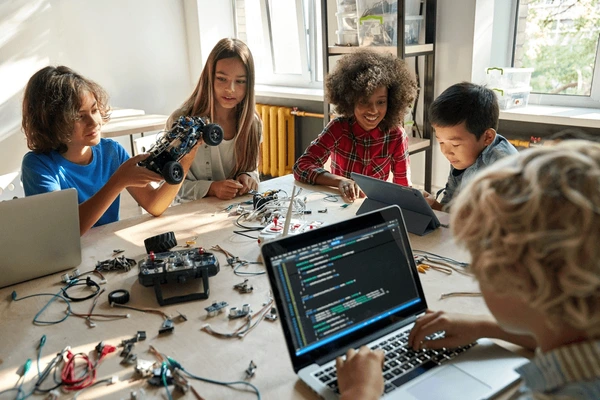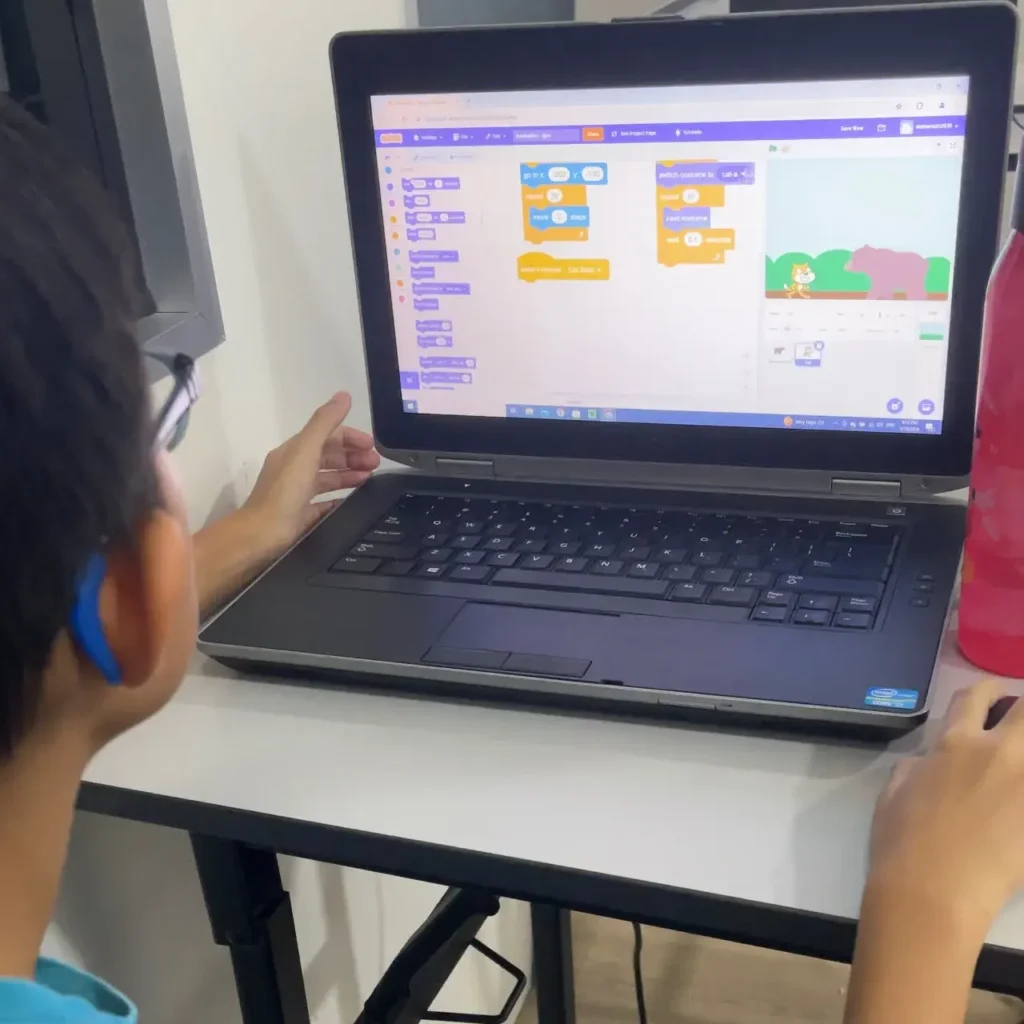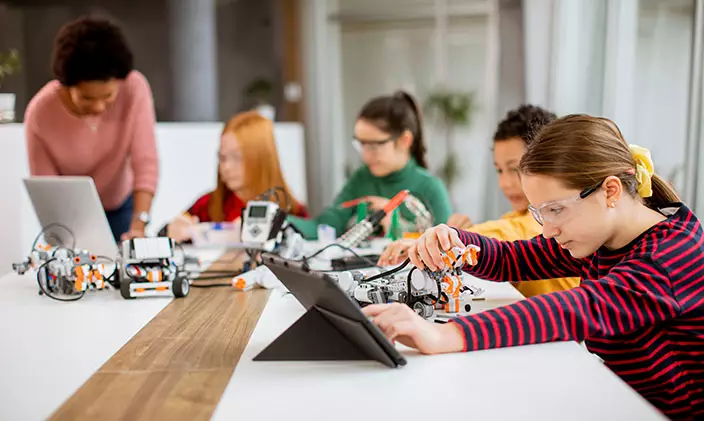As a coding trainer specializing in robotics and coding education, I understand that fostering a love for coding in children requires more than just lessons and resources. It’s about creating an environment where they can explore, learn, and grow. Here’s how to create a coding-friendly environment at home, tailored for busy moms.
7 Proven Tips to Create a Coding-Friendly Space

1. Designate a Coding Space
Organize and Personalize the Workspace
Creating a dedicated coding space can make a big difference in how focused and productive your child is. It doesn’t have to be a whole room; even a corner of a bedroom or a spot on the dining table works.
Here’s how to set it up:
- Comfortable Seating: Ensure they have a comfy chair that supports good posture.
- Adequate Lighting: Good lighting reduces eye strain. A desk lamp can be a simple solution.
- Personal Touches: Let your child personalize their space with posters, favorite toys, or anything that inspires them.
Minimize Distractions
Once the space is set up, minimizing distractions is key to maintaining focus. Here are a few tips:
- Turn Off Notifications: Encourage your child to silence notifications on their devices during coding time.
- Quiet Hours: Set specific hours when coding is the main activity, and avoid other distractions like TV or loud music.
- Limit and Control Laptop Content: Make sure to monitor and limit access to distracting websites like YouTube or games during coding sessions. You can set up parental controls to restrict access, ensuring that your child can focus solely on their coding projects.

2. Establish Consistent Time for Coding
Consistency is vital for developing any new skill, including coding. Setting a regular time for coding can help your child build a routine, making it easier for them to dive into projects without needing constant reminders.
Tips for Creating a Schedule:
- Choose a Convenient Time: Consider when your child is most alert and creative.
- Start Small: If an hour feels too long, begin with 20-30 minutes and gradually increase it as their interest grows.
- Use Timers: Setting a timer can help them stay focused during their coding sessions.

3. Tech Essentials
You don’t need the fanciest gadgets to start coding. A simple computer or laptop with internet access is enough. For beginners, platforms like Scratch are awesome. They let you create games and stories, and guess what? It’s super fun!
Recommendations:
- Scratch: Perfect for younger kids, this platform uses visual blocks to teach coding concepts in a playful way.
- Code.org: Offers various interactive activities, including coding games that teach foundational skills.
- Kodable: An app that teaches coding basics through engaging games.
Importance of Access to Resources
Make sure your child has easy access to coding resources and tools. Set up bookmarks for coding websites and tutorials, and encourage them to explore.

4. Start with an Interest-Based Mini Project
When you’re introducing coding to your child, it helps to start with something they’re already excited about. Whether it’s a favorite video game, a beloved cartoon character, or even a hobby like sports or arts and crafts, tie the coding project to their interests.
How to Get Started
- Choose a Topic: Ask your child what they’re passionate about.
- Set a Small Goal: Keep the project manageable. For instance, create a character and a simple backdrop in Scratch.
- Celebrate Small Wins: Each time they accomplish a part of the project, celebrate it. This builds confidence and encourages further exploration.

5. Encourage Collaboration and Sharing
Coding can be a solitary activity, but it doesn’t have to be! Encourage your child to collaborate with friends or family members on projects.
How to Foster Collaboration:
- Host Coding Nights: Once a month, invite friends over for a coding night where everyone can work on their projects together.
- Join Online Coding Communities: Platforms like Scratch have online communities where kids can share their projects and get feedback.

6. Provide Guidance and Support
While it’s important for kids to have their independence, being there to guide them when they hit roadblocks is crucial. Let them know that asking questions is a part of learning.
Supporting Your Child:
- Be Involved: Occasionally sit with them while they code, ask questions, and show genuine interest in their projects.
- Encourage Problem-Solving: Instead of providing the answer, ask leading questions that help them think through the problem.

7. Celebrate Achievements
Finally, make sure to celebrate every achievement, no matter how small. This reinforces their effort and keeps their motivation high.https://advaspire.com/why-reward-system-is-important-for-kids/
Celebration Ideas:
- Showcase Projects: Set up a mini showcase day at home where they present their projects to the family.
- Reward System: Create a reward system for completed projects—stickers, extra screen time, or a fun outing can be great incentives.
Creating a coding-friendly environment at home is about more than just having the right tools; it’s about fostering a culture of creativity and exploration. By starting with interests, setting up a dedicated space, minimizing distractions, and celebrating achievements, you’re helping your child build not just coding skills but also confidence and a love for learning.
So, let’s get started on this exciting coding journey together! Your child is sure to thrive in a supportive and engaging environment.